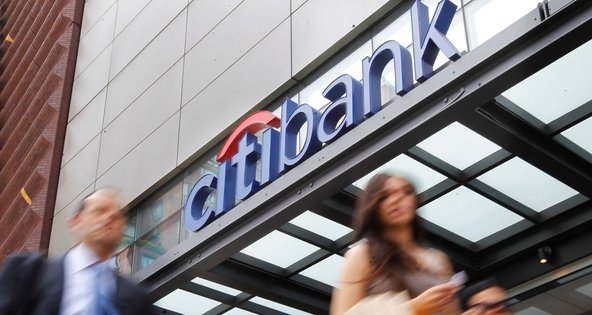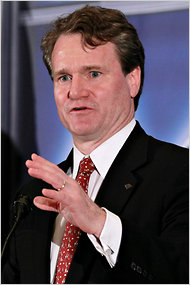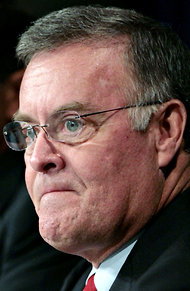The Dow Jones industrial average rose to its highest close of the year Tuesday, putting it within 1 percent of its record. Stocks gained after two big consumer brands posted impressive quarterly results.
The Dow closed up 47.46 points, or 0.34 percent, to 14,018.70 Tuesday. That is 146 points from its record close of 14,164.53 set in October 2007. The Standard Poor’s 500-stock index gained 2.42 points, or 0.16 percent, to 1,519.43, also close to its record.
In a day of quiet trading, stocks were driven higher by the beauty products maker Avon and the luxury clothing and accessories company Michael Kors, whose results impressed investors. Consumer spending accounts for 70 percent of economic activity in the United States.
Financial and home-building stocks, led by the Bank of America and the Masco Corporation, which reported some of the day’s biggest gains, also lifted the averages.
The Dow has logged its best January in almost two decades after lawmakers reached a last-minute deal to avoid sweeping tax increases and spending cuts. Investors are also becoming more optimistic that the housing market is recovering and that hiring is picking up.
The Dow has advanced 7 percent this year and the S. P. 500 is up 6.6 percent.
The 30-member Dow has closed above 14,000 twice this month. Before February, the index closed above that level just nine times in its history. The first time was in July 2007; the rest were in October of that year.
Shares of Avon rose $3.51, or 20 percent, to $20.79 after the company posted a fourth-quarter loss that was not as bad as analysts expected. The company also hopes to save $400 million by slashing costs. Michael Kors rose $5, or 9 percent, to $62 after reporting earnings that beat analysts’ predictions.
Bank of America was the biggest gainer on the Dow, adding 38 cents, or 3.25 percent, to $12.24. Stocks gaining in the index outnumbered those falling by a ratio of more than four to one.
About 70 percent of companies in the S. P. 500 have reported earnings for the fourth quarter. Analysts are projecting that earnings will rise 6.4 percent for the period, an improvement from the 2.4 percent growth reported in the third quarter, according to S. P. Capital IQ.
Investors may have become too optimistic about the outlook for stocks, said Uri Landesman, president of the hedge fund Platinum Partners.
“The market is priced for perfection,” Mr. Landesman said. “The odds of a disappointment are very, very high.”
Mr. Landesman predicts that the S. P. 500 will climb past its record and rise as high as 1,600 by April before then slumping as low as 1,300 as company earnings start to disappoint investors. The record close for the S. P. 500 is 1,565, reached in October 2007.
Investors were expected to be watching closely Tuesday night when President Obama delivered his annual State of the Union address. Mr. Obama was expected to focus on the economy, including job creation.
A decline in bond prices since the beginning of the year has also slowed. The Treasury’s 10-year note fell 4/32 to 96 28/32 on Tuesday and the yield rose to 1.98 percent from 1.96 percent late Monday. The yield was 1.71 percent at the beginning of the year.
In other trading Tuesday, the Nasdaq composite index was down 5.51 points, or 0.17 percent, to 3,186.49.
Among other stocks making big moves:
Coca-Cola, the beverage company, fell $1.05, or 2.7 percent, to $37.56 after reporting fourth-quarter revenue that fell short of analysts’ forecasts.
Masco, a home improvement and building product company, rose $2.22, or nearly 13 percent, to $20.01 after reporting earnings that beat analysts’ expectations, helped by strong demand in North America.
Dun Bradstreet, a provider of credit and business data, fell $6.60, or 7.7 percent, to $78.68 after the company reported a fourth-quarter profit that was below market expectations.
Article source: http://www.nytimes.com/2013/02/13/business/daily-stock-market-activity.html?partner=rss&emc=rss


